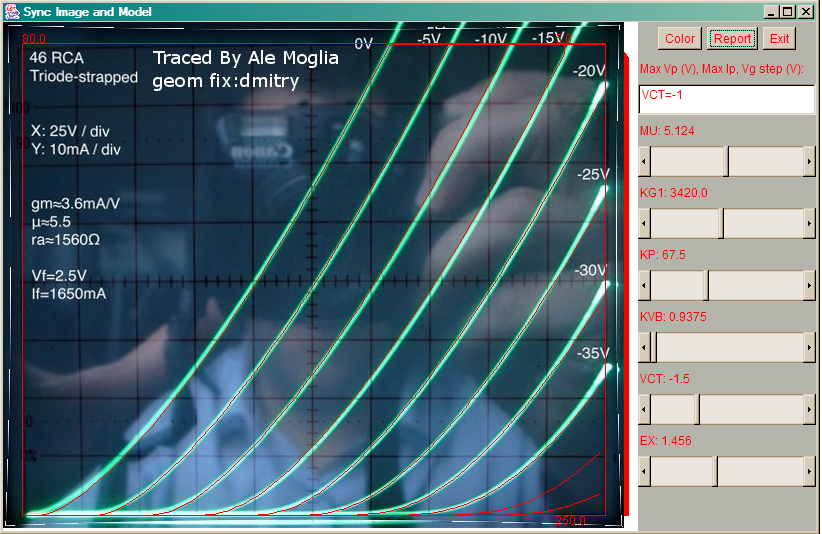My initial attempt to get a reasonable SPICE model for a 46 triode-connected DHT has proven to be ok considering it was my first try. I got better accuracy with my second attempt using CX-301a. With time, I should learn the skills of Dmitry Nizh to master the great tool he has developed. For the ones who haven’t seen his website and great material Dmitry has produced around DHT, SPICE and other good stuff, I recommend you to read his article about composite models for DHT here.
Dmitry kindly produced a very accurate model for the 46 (and also shown clearly that I’m a still a rookie at this things ):
And here is the equivalent Spice model:
Using a simple circuit in LTspice we can test the model and trace the anode characteristic curves:
And the curves can be easily generated:
Note that grid voltage starts at 0V in -10V steps.










